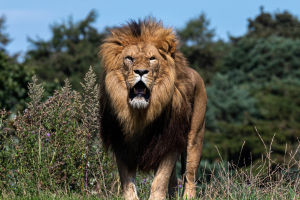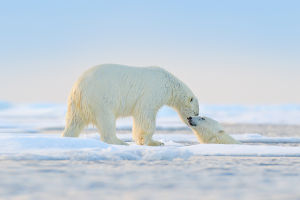We’ve all seen those stunning images of white bears wandering across endless icy landscapes—but things aren’t as peaceful as they seem. Polar bears, the kings of the Arctic, are now facing real struggles to survive.
Let’s take a closer look together and see what’s really happening with these mighty animals—and why it matters for all of us.
Where do polar bears actually live?
Polar bears, also called white bears or sea bears, live in the Arctic region. We can find them around the North Pole, across areas where sea ice floats. Even though they mostly stick to the icy Arctic, the southernmost point where they’ve been seen is James Bay in Canada. Surprisingly, some have even been spotted as far north as 88° latitude!
To help scientists understand their behavior and protect their living spaces, the world has divided the polar bear’s habitat into 19 regions. These regions are crucial because sea ice isn’t just their floor—it's their hunting ground, resting platform, and even nursery for moms raising cubs.
Why is sea ice so important for polar bears?
We might think polar bears just live in the snow, but actually, it’s the ice on the sea that’s most important to them. They rely on sea ice to hunt seals and fish, their main food sources. When the ice disappears, their dinner table vanishes too.
Mother bears use snow dens on land or near sea ice to give birth and raise their cubs safely during the coldest months. Places like Wrangel Island in are famous for being prime spots for moms to care for their babies.
Some key areas where polar bears are often found include:
- Northern and western Alaska (U.S.)
- The Canadian Arctic Archipelago
- Surrounding waters of Greenland
- Svalbard and Franz Josef Land (Norway)
- Coastal and sea ice zones in the Arctic region of northeastern Europe
Are polar bears social animals?
Not really! Most of the time, polar bears live alone. They don’t travel in packs or families. The only exception is when a mother raises her cubs—she does this all on her own. During mating season, males and females will stay together briefly, but otherwise, they’re loners.
What’s even more interesting is the size of their territory. Some bears roam within 200 square kilometers, while others may cover up to 960,000 square kilometers! That’s like walking across entire countries just to find food.
Why are polar bears struggling to survive now?
This is where things get worrying. Over the last few decades, warmer global temperatures have caused sea ice to melt earlier in the year and form later in the season. This leaves polar bears with less time to hunt and less space to rest or raise their young.
They’ve been forced to swim longer distances and even travel further south to find food. In some areas, polar bears are becoming thinner and more exhausted. Experts believe that if this continues, we might lose these amazing creatures within this century.
Can we just move them to the South Pole?
It might sound like an easy fix, but it’s not. Some have suggested relocating polar bears to Antarctica, which is also icy and cold. But doing that could seriously harm the delicate balance of life there. Scientists worry that introducing such powerful predators to a new ecosystem would create more problems than it solves.
Instead, the focus is on protecting their current habitat—keeping sea ice around as long as possible and reducing pollution in the Arctic waters.
What can we do to help?
Even though we live far from the Arctic, our choices matter. Simple steps like using less energy, supporting clean energy projects, or staying informed about wildlife conservation can make a difference. Many groups are working to track polar bear movements, protect their habitat, and educate the public. We can support them and spread awareness.
So, Lykkers, what do you think?
It’s hard not to admire polar bears—they’re strong, majestic, and surprisingly gentle when raising their cubs. But now they need us. Whether you’re a nature lover, a curious mind, or someone who just wants to help protect our planet, every bit counts.
Let’s keep learning, sharing, and caring—for the polar bears, and for the Earth we all call home.


